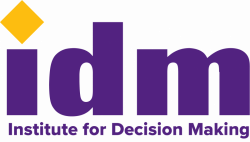Partnering With Your Board Chair
Partnering With Your Board Chair
No relationship within an EDO is more vital than the one between developers and their Board Chairs. Consider these five tips for getting off to a good start.
Seasoned development professionals understand the importance of cultivating strong relationships with their Board Chair for the benefit of the organization and their careers. While you may have had a great working relationship with your outgoing chair, don’t assume that their strengths, preferences, communication style and priorities will carry over. Taking time to clarify roles/responsibilities and establish communication preferences and protocols is an investment with high ROI.
Consider scheduling an annual “orientation” meeting with your Board Chair to discuss how the Board and staff are going to interact and partner.
- Build consensus on Board and staff expectations by developing an “Expectation Profile”. Include the profile in your Board packet and refer to it during your Board meetings. Referencing these expectations reminds everyone when to step up, step back or step aside in the face of the never ending list of issues and opportunities facing most EDO’s.
- Ask and inventory: Email? Text? Phone? Face to Face? No two people have the same communication styles or preferences. Ask and inventory your Chair and Board on the who’s, how’s and when’s of communication. Rather than being frustrated that so and so doesn’t return your emails, find out what would work and share it with your staff. Don’t forget to share your own preferences.
- Give them a pass. Ask and catalog, “What is the one thing you don’t want to be asked to do?” You need to play to the strengths and comfort levels of your leadership. Asking someone to step in front of a camera or lead a tour will fail miserably if they would prefer to be reviewing finances or analyzing research.
- Help them build their own legacy. Being a Board Chair can be as daunting as it is rewarding. Celebrating their leadership and contributions early in their tenure builds confidence and reinforces that you are looking to collaborate and strengthen the organization.
- Get feedback on the “orientation meeting”. Steps 1-4 are great, but worthless if they are never revisited or evaluated. Incorporating quarterly discussions on communication into your Board meetings will reinforce the partnership you are forging with your Chair and help groom your staff and future Chairs.

